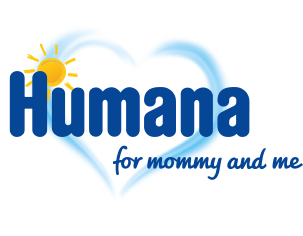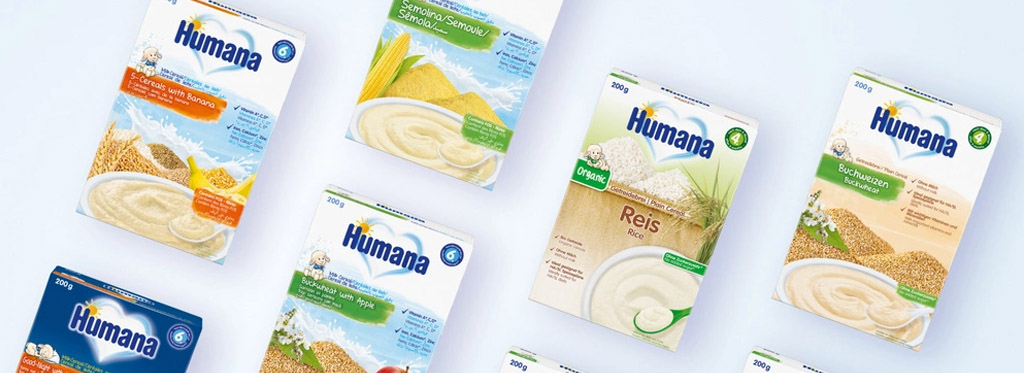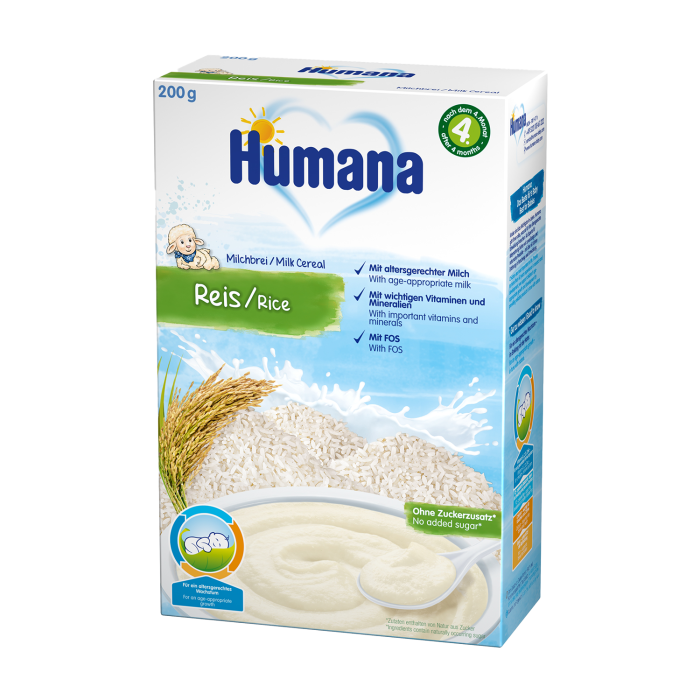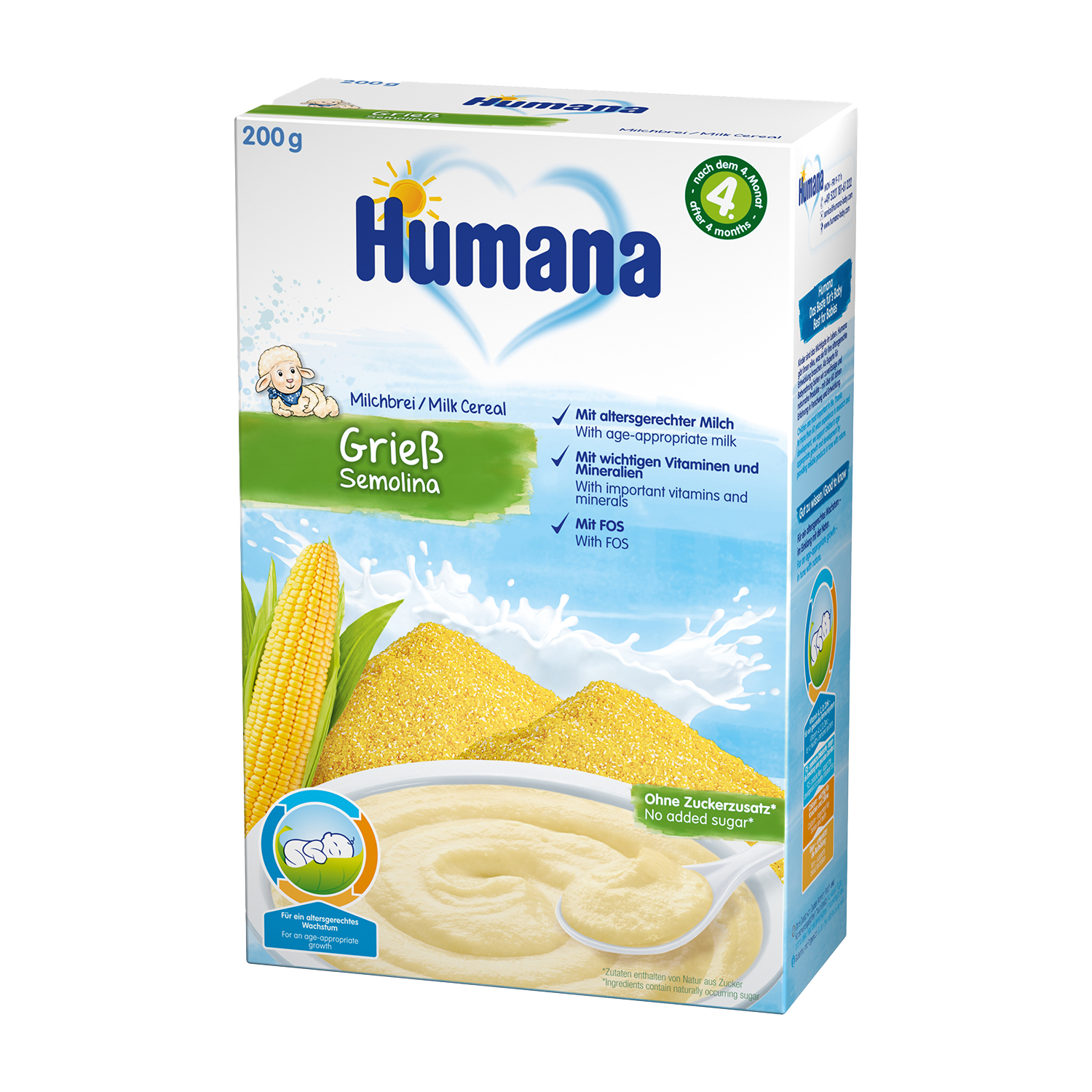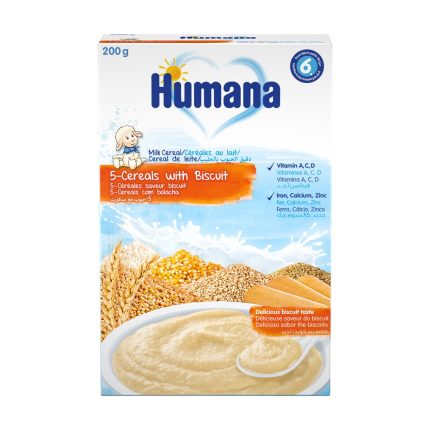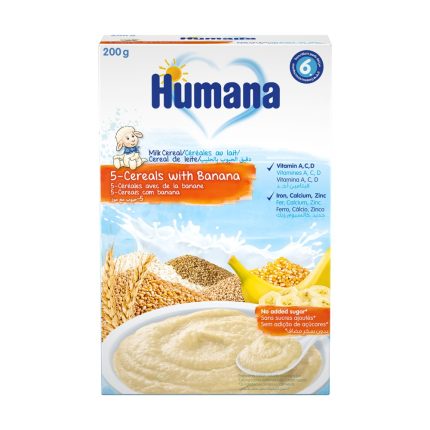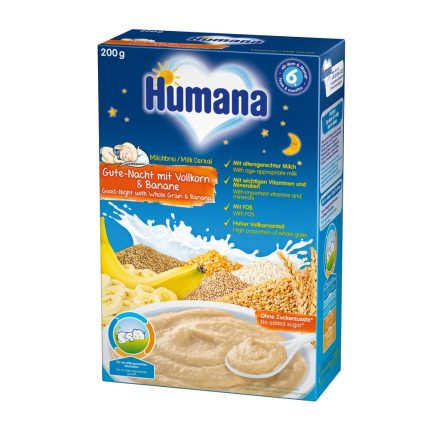Blog
Your baby’s first solid food. Where to start?

From the beginning of the 6th month, the baby needs to get used to thicker food.
How to start complementary food?
Porridges
Milk porridges are most suitable in taste and consistency for the transition from milk to other products, but before introducing complementary foods, it is necessary to monitor the baby’s stool and how the baby is gaining weight. Only after this can you determine which product to start feeding with:
- with unstable weight gain and a tendency to more liquid stools, porridges will be the ideal first feeding;
- with a tendency to excess weight and constipation – vegetable puree.
Corn grits are also considered a dietary product. This cereal is rich in starch and antioxidants (tocopherols). It performs a detoxifying function in the body.
But buckwheat and oatmeal have the greatest nutritional value with the highest content of proteins, fats, B vitamins (B 1, B 2, B 3), folic acid, magnesium, iron, etc. Cereals also contain important lipotropic substances (choline, lecithin, phospholipids), which protect the liver and are necessary for the normal functioning of the endocrine, nervous and muscular systems.
Rice is especially rich in carbohydrates (mainly starch), does not contain fiber, is easily digestible, and differs from other cereals in the enveloping properties of mucus on the intestinal mucosa. The anti-inflammatory properties of rice allow it to be widely used in the treatment of gastrointestinal dysfunctions.
Buckwheat and oatmeal contain the largest amount of plant fibers that stimulate intestinal peristalsis and perform a detoxifying function (remove harmful substances from the body).
Vegetables and fruits
Fruit and vegetable purees and juices are a source of carbohydrates, iron, vitamins C, A, folic acid, organic acids. In addition, fruit and vegetable purees contain important dietary fiber, which improves intestinal motility and performs a detoxifying function (binds and removes harmful substances from the body).
Meat
Meat is one of the main food products with a high content of complete proteins, mineral salts: iron, phosphorus, potassium, magnesium, zinc, B vitamins (B 1, B 2, B 3, B 6, B 12). The absorption of iron from meat is 3 times higher than from fruits and vegetables.
Introduce meat:
- From 6 months of the baby’s life, it is necessary to begin gradually introducing meat complementary foods according to the following scheme: with 1/4 teaspoon of homogeneous puree, mixing it with vegetables and increasing its quantity over 7-10 days to 30 g per day.
- At the age of 9 months, meat may contain small pieces.
- A child aged 6-9 months is recommended to eat the following meat: veal, turkey, chicken, rabbit, lean pork. Meat with inclusions of offal is allowed from 8 months.
Eggs
Egg yolks contain valuable proteins and fats (30%), including essential fatty acids. It is rich in lecithin (improves the absorption of fats), vitamins (A, D, E, B 1 , B 2 , B 6 , B 12 ), minerals (phosphorus, calcium, iron).
Introducing eggs into a baby’s diet
Egg yolk should be introduced into a baby’s diet from 7 months, given its rather high allergy characteristics.
Start with 1/8 of the yolk, grinding it well, and add it to vegetable purees or dilute with breast milk/formula.
You cannot introduce egg whites before 1 year (high risk of allergy).
Fish
Fish, like meat, is the main supplier of high-quality protein, has a delicate structure and is easily absorbed by the child’s body. Fish is a source of complete polyunsaturated fatty acids (omega 3), minerals (potassium, phosphorus, iron, magnesium, zinc), and B vitamins (B2, B6, B12).
